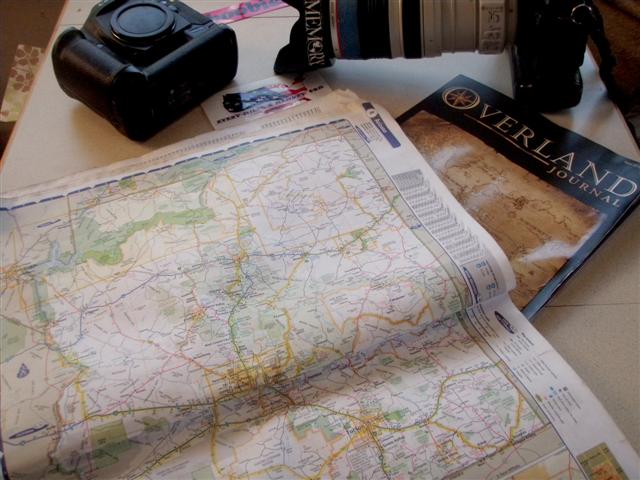| |


 



    









We wander for
distraction, but we travel for fulfillment. ~
Hilaire Belloc
|
When we
realize our insignificance in this world,
it some how relieves the
pressures from society to succeed -
Cindy Bonish 04/07
Tread Lightly!’s Tips for Responsible Camping
Travel responsibly
on designated roads
and trails or in permitted areas.
-
While traveling to
your favorite camping spot, stay on designated roads and trails.
-
Follow best practices
for negotiating terrain for your type of travel.
-
Don’t create new
routes or expand existing trails.
-
Cross streams only
at fords where the road or trail crosses the stream.
-
Comply with all
signs and barriers.
-
Buddy up with two or
three campers. Traveling solo can leave you vulnerable if you have an
accident or breakdown.
Respect the rights of others
including private
property owners and all recreational trail users, campers and others to
allow them to enjoy their recreational activities undisturbed.
-
Be considerate of
others on the road, trail, or campground
-
Keep noise to a
minimum especially in the early morning and evening hours.
-
Be considerate of
other campers’ privacy, keep your distance and avoid traveling through
their campsites.
-
Camping supplies in
natural colors blend with natural surroundings and are less intrusive
to other campers’ experiences.
-
Leave gates as you
find them.
-
If crossing private
property, be sure to ask permission from the landowner(s).
-
When driving yield
to horses, hikers, and bikers.
Educate
yourself
by obtaining travel
maps and regulations from public agencies, planning for your trip,
taking recreation skills classes, and knowing how to use and operate
your equipment safely.
-
Obtain a map of your
destination and determine which areas are open to your type of travel.
-
Make a realistic
plan, and stick to it. Always tell someone of your travel plans.
-
Contact the land
manager for area restrictions, closures, and permit requirements.
-
Check the weather
forecast for your destination. Plan clothing, equipment, and supplies
accordingly.
-
Carry a compass or a
Global Positioning System (GPS) unit and know how to use them.
-
Prepare for the
unexpected by packing emergency items.
Avoid sensitive areas
such as meadows,
lakeshores, wetlands and streams, unless on designated routes. This
protects wildlife habitat and sensitive soils from damage.
·
Other sensitive habitats to avoid unless on designated
routes include cryptobiotic soils of the desert, tundra, and seasonal
nesting or breeding areas.
· Avoid
disturbing historical, archeological, and paleontological sites
-
Avoid “spooking”
livestock and wildlife you encounter and keep your distance.
-
Motorized and
mechanized vehicles are not allowed in areas designated Wilderness.
Do your part
by leaving the area
better than you found it, properly disposing of waste, minimizing the
use of fire, avoiding the spread of invasive species, restoring degraded
areas, and joining a local enthusiast organization.
-
Pack out what you
pack in.
-
Carry a trash bag
and pick up litter left by others.
-
Repackage snacks and
food in baggies. This reduces weight and amount of trash to carry out.
-
Whenever possible,
use existing campsites. Camp on durable surfaces and place tents on a
non-vegetated area. Do not dig trenches around tents.
-
Camp a least 200
feet from water, trails, and other campsites.
-
For cooking, use a
camp stove. They are always preferable to a campfire in terms of
impact on the land.
-
Observe all fire
restrictions. If you must build a fire use existing fire rings, build
a mound fire or use a fire pan.
-
For campfires, use
only fallen timber. Gather firewood well away from your camp. Do not
cut standing trees.
-
Let your fire burn
down to a fine ash. Ensure your fire is completely extinguished.
-
Do not wash in
steams and lakes. Detergents, toothpaste and soap harm fish and other
aquatic life.
-
Wash 200 feet away
from streams and lakes. Scatter gray water so it filters through the
soil.
-
In areas without
toilets, use a portable latrine if possible and pack out your waste,
otherwise it’s necessary to bury your waste. Human waste should be
disposed of in a shallow hole (6”-8” deep) at least 200 feet from
water sources, campsites, or trails. Cover and disguise the hole with
natural materials. It is recommended to pack out your toilet
paper. High use areas may have other restrictions so check with a land
manager.
-
Following a trip,
wash your gear and support vehicle to reduce the spread of invasive
species.
Click here to get
more
tips
for all kinds of outdoor recreation.
Commit to camp
responsibly by becoming a
Friend of Tread Lightly!
free.

Return to Top of Page
Every
Miles A Memory

Need Unlimited photo storage- FREE Trial of Smugmug
|
|






